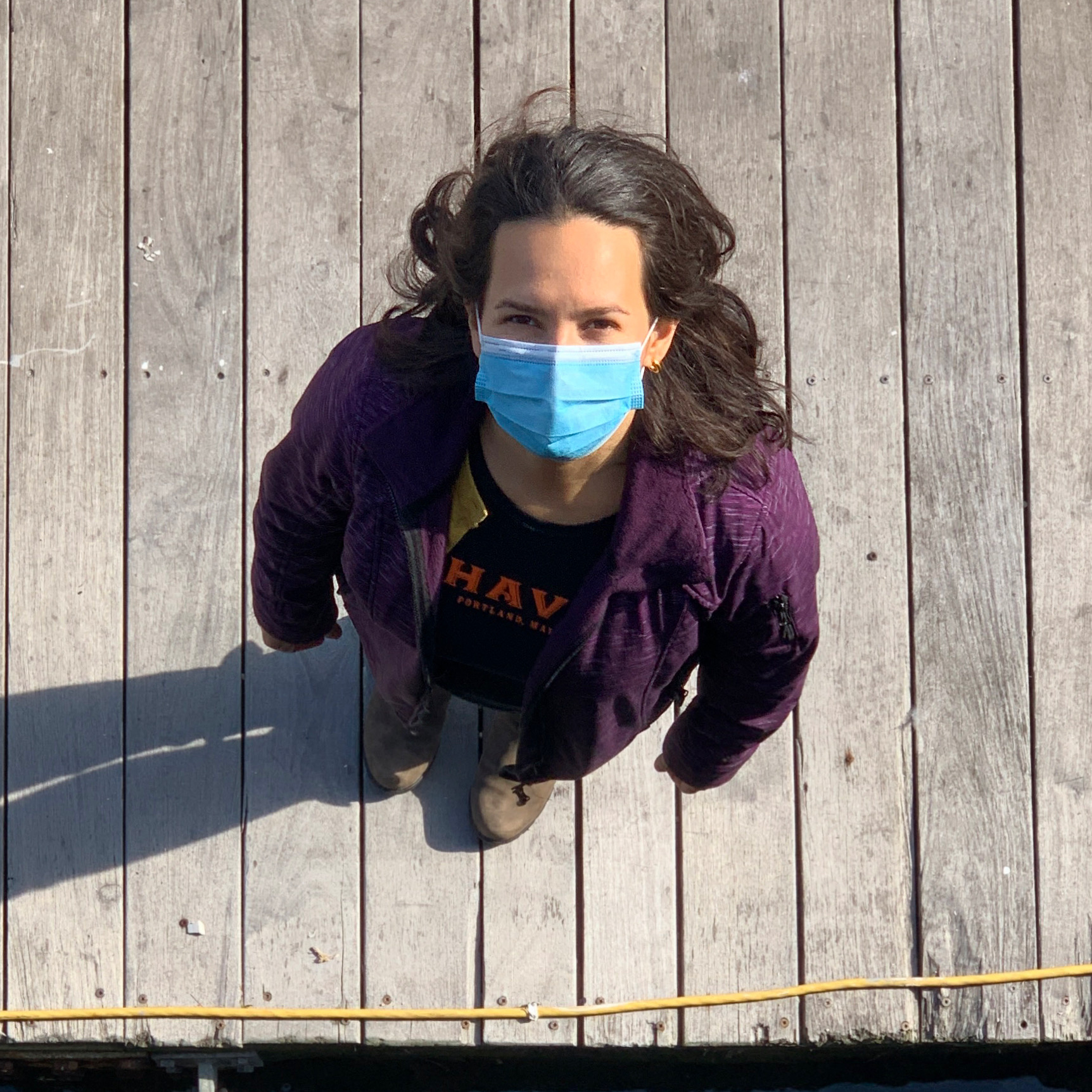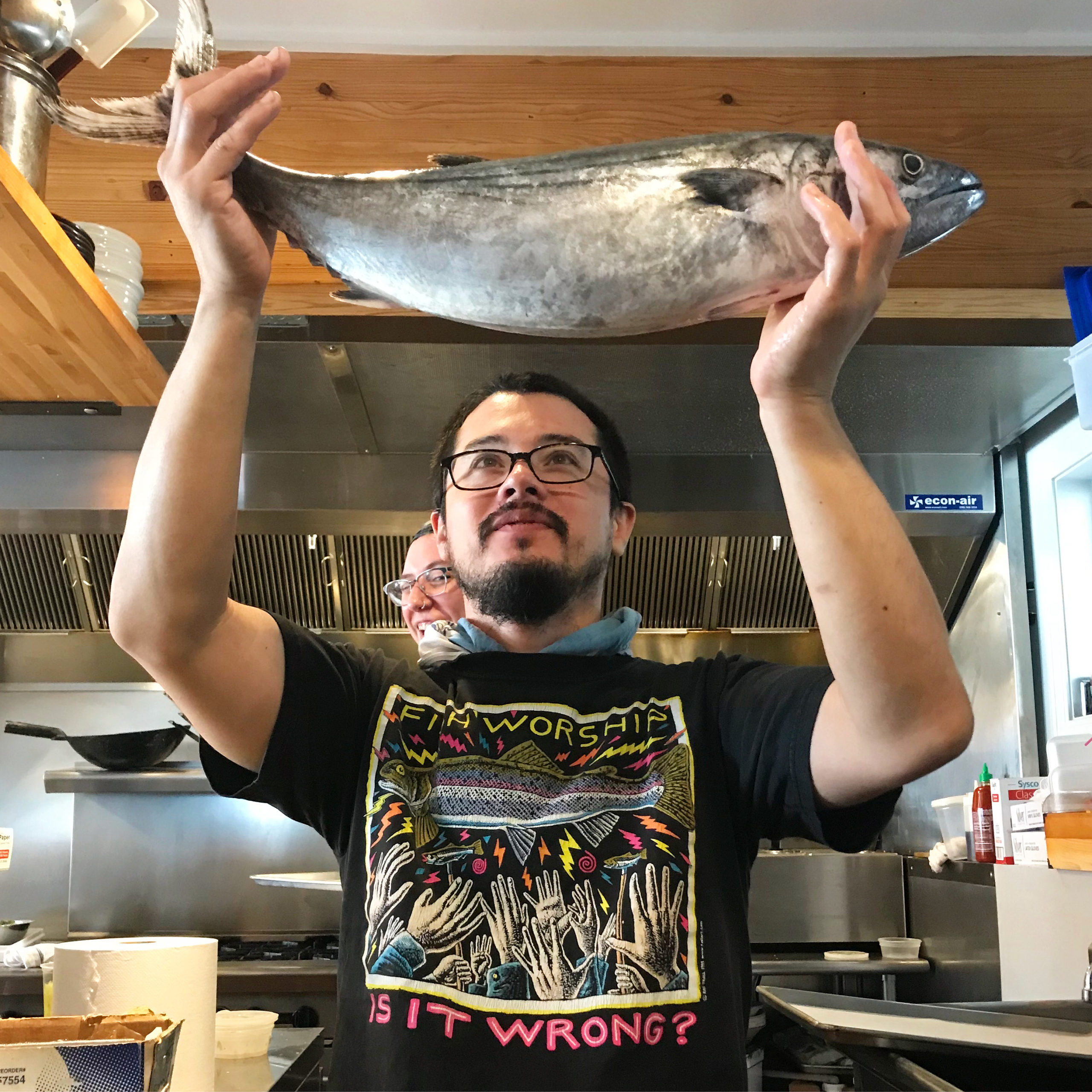Welcome to the March edition of My Kitchen, Their Table, an interview series with the chefs and culinary professionals who work hard to satisfy our small city’s big appetite. This month we’re featuring an interview with Ilma Lopez, co-owner and pastry chef of Chaval. Photos and videos will continue to expand on the story throughout the rest of the month on instagram, so stay tuned.
 Ilma Lopez had been attending medical school for two years when she decided she wanted to go to culinary school instead. Her mother made her a deal. She could drop out, but only if she kept her grades up for another year while also working at a restaurant. Sure enough, Lopez excelled both in the classroom and the kitchen, winning her mother’s approval to trade stethoscopes and lab coats for whisks and aprons.
Ilma Lopez had been attending medical school for two years when she decided she wanted to go to culinary school instead. Her mother made her a deal. She could drop out, but only if she kept her grades up for another year while also working at a restaurant. Sure enough, Lopez excelled both in the classroom and the kitchen, winning her mother’s approval to trade stethoscopes and lab coats for whisks and aprons.
In 2004, Lopez graduated from the pastry program at Stratford University in Virginia. Her next stop was New York City where she met her future husband and business partner, Damian Sansonetti, while working as the pastry cook at DB Bistro. At first, they didn’t get along. “I thought he was a total jerk. He was so bossy. Plus, he played rock music while we prepped,” she recalls. Needless to say, it wasn’t love at first sight, but one trip to Long Island Beach with mutual friends would forever change their relationship. “We started talking and I realized he wasn’t so bad. Fourteen years later, here we are,” she jokes.
Lopez honed her pastry skills at some of the most acclaimed restaurants in New York City and beyond. She perfected French technique at Le Bernadin, embraced new disciplines while staging at El Bulli in Spain, and experimented with exotic ingredients gathered from the ports of Greece, India, and China while working at sea on a luxury cruise ship.
After her world travels, Lopez and Sansonetti were ready to leave the Big Apple in pursuit of a place with restaurant potential, direct access to farmers, and somewhere their future children would always want to come home to. That place, they decided, was Portland, Maine.
Their first restaurant, Piccolo, was an instant hit. The intimate Italian restaurant earned Lopez a StarChefs Rising Star award in 2014 and two James Beard Award nominations for Outstanding Pastry Chef in 2017 and 2018. Sadly, after seven celebrated years, Piccolo joined the pandemic casualty list this past July.
Lopez and Sansonetti’s second restaurant, Chaval, continues to thrive and evolve under these challenging times. The West End brasserie was named Best New Restaurant in 2017 by Portland Press Herald and has been featured in several other publications including Bon Appetit and Down East.
Check out the full interview with Chef Ilma Lopez to learn where she goes in Portland for takeout and great cocktails, how she became a leader behind the grassroots organization, Cooking for Community, and what it was like cooking beside one of the world’s greatest chefs, Ferran Adriá!
THE INTERVIEW
AA: How have your parents been crucial to your success as a chef and restaurant owner?
IL: I owe it to my mom. She’s always pushed me to be the best at whatever I choose to do. When I moved away from home, twenty years ago, my mom would call me every day, even when I was in Europe and Asia. She moved to Maine three years ago. She made the curtains at Chaval and my grandmother made the pillows. My dad is also fantastic. They’ve both supported me everywhere I go and in everything that I do.
AA: What was it like staging at El Bulli for the renowned chef, Ferran Adriá?
IL: It was awesome. I’ve never seen a kitchen run that way before. When I was in New York I would show up for my shift at 4 or 5 in the morning even though I was scheduled for 7 am — because being your best meant showing up early and working harder than anyone else. So, on my first day at El Bulli, I showed up two hours early and Chef Ferran asked me what I was doing. He didn’t allow anyone to start early. At first, it blew my mind because there I was working for free trying to give him even more of my time. Then, I understood; everyone started at the same time so that everyone had the same opportunities. We were all equal.
AA: How did you become one of the founding restaurants behind Cooking for Community?
IL: Lesley Oster, the general manager of Aurora Provisions, and Ellie Linen Low were looking for chef partners. They contacted me because they knew I was a big advocate for Full Plates Full Potential and Ian Malin, owner of Little Giant. Chaval was doing 500 meals per week at the beginning of the pandemic. As more restaurants have joined the cause, we are doing closer to 100 meals per week.
AA: What is your favorite dessert that you’ve ever made?
IL: Hands down, it’s my raspberry sorbet with caviar. It was on Chaval’s menu in the summer of 2019. I love caviar! You can use it in anything. I made the sorbet with seawater and fromage blanc with goat cheese from Sunset Acres. His cheese is delicious, but what really sold me was that he brings the baby goats with him on deliveries.
AA: What are some of your favorite restaurants in Portland?
IL: We tend to go to places where we adore the people, like Chris and Paige at Tipo and Central Provisions. If I want crudo, I go to Central Provisions and every Fall, I have to go to Tipo for the local pear and ricotta crostini. It’s sourdough bread with ricotta, sliced pear, olive oil, sea salt, and dried chile. It’s so simple but so good.
AA: Where else do you go for a consistently delicious meal?
IL: Sur Lie has great service and solid food and Krista and Tony are such good people. The pimento cheese and fried chicken is really tasty. I also really like Schulte and Herr. I love how non-pretentious and hospitable Steffi and Brian are. It’s one of those places you go because you feel welcome. Their zwiebelkuchen is the best onion tart I’ve ever had. Just perfect.
AA: Where do you go for a great cocktail?
IL: I love Cocktail Mary. In the fall, Isaac MacDougal makes a frozen cocktail inspired by a pumpkin spice latte. It’s made with Allen’s Coffee Flavored Brandy. You don’t usually see that liquor on menus because it’s not high-end, but I like it and that drink is fantastic!
AA: What are some of your go-to takeout spots?
IL: We love the eggplant parmesan at Isa Bistro and the crab cakes at Woodford F&B. Oh, and the banana pudding at Figgy’s! I have a weakness for custard.
AA: Is there anywhere around here with food that reminds you of home?
IL: The pan de bono at Maiz is just like I had it growing up in Venezuela. My family is Columbian, so that’s the kind of food we ate. Pan de bono is cheese bread, but gluten-free because it’s made with yucca flour. They sell it freshly-baked or frozen. I like to get it frozen, so I can bake it at home antid have it with hot chocolate — just like my grandmother used to make.
This interview has been edited and condensed for clarity.
A few notes on the restaurants mentioned in this article: Central Provisions has temporarily transformed into Central Sandwich and Provisions, Tipo’s patio is open for outdoor seating, Takeout is available from Isa, Sur Lie and Schulte and Herr. Cocktail Mary expects to restart their cocktails to go program in April, Woodford F&B has takeout and (weather permitting) outdoor seating. Figgy’s re-opened for takeout on March 9th.
Previous editions of My Kitchen Their Table have featured Courtney Loreg, Chad Conley Atsuko Fujimoto, Matt Ginn, Jordan Rubin, and Cara Stadler, and Thomas Takashi Cooke.
The My Kitchen Their Table series is brought to life through the talent and hard work of food writer Angela Andre, and the generous sponsorship by Evergreen Credit Union and The Boulos Company.






